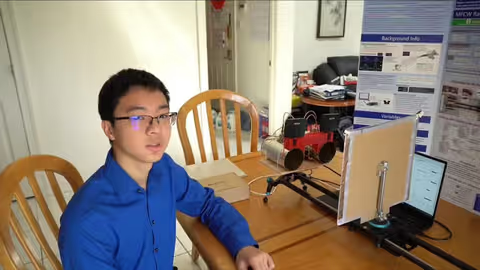
Parkland High School Student Victor Cai Demonstrates LimeSDR Mini's Flexibility with a Narrowband RADAR Experiment
The potential for Lime Microsystems' LimeSDR Mini open software defined radio to democratise innovation in radio has been wonderfully highlighted at the GNU Radio Conference 2020 (GRCon20), where a high-school student has presented a project to build a low-cost narrowband RADAR.
In a presentation at GRCon20, student Victor Cai presented a project to build a narrowband RADAR system powered by a LimeSDR Mini open software defined radio, an off-the-shelf laptop, home-made antennas, and the open-source GNU Radio software platform.
"This project achieved both high accuracy and low cost in a narrowband RADAR design by combining the unpopular Multiple Frequency Continuous Wave (MFCW) RADAR algorithm with the low-cost Software Defined Radio (SDR) on the GNU Radio platform," Cai explains in his paper's abstract. "According to traditional Pulse or FMCW RADAR technologies, a typical SDR with 4MHz BW will have a theoretical accuracy limit of 3750cm (i.e. inaccuracy equivalent to the size of a large house). However, this project established the first SDR-based MFCW RADAR in the 2.4-2.5GHz band using two Continuous Waves (CW) with only a few kHz BW and a superior range accuracy of 15cm.
"Despite a lack of applicable publications on MFCW RADAR, a distance sensing algorithm capable of automatically correcting erroneous results from direct delta phase calculation was able to be created. This proof of concept opens the doors to many short-range RADAR applications using the emerging low power and low cost SDR technology."

Cai's work highlights the goal of the LimeSDR platform: democratising the radio waves for all by dramatically increasing accessibility and reducing the cost of experimentation with high-performance transmit-and-receive software-defined radio. Powered by Lime Micro's LMS7002M field-programmable radio-frequency (FPRF) chip, the LimeSDR family is ideally suited to this kind of work - whether carried out by a high school student or in a university lab or corporate research and development setting.
More information on Cai's project, including PDFs of the presentation given at GRCon20 and the paper detailing his work, can be found on the OpenConf.org website.